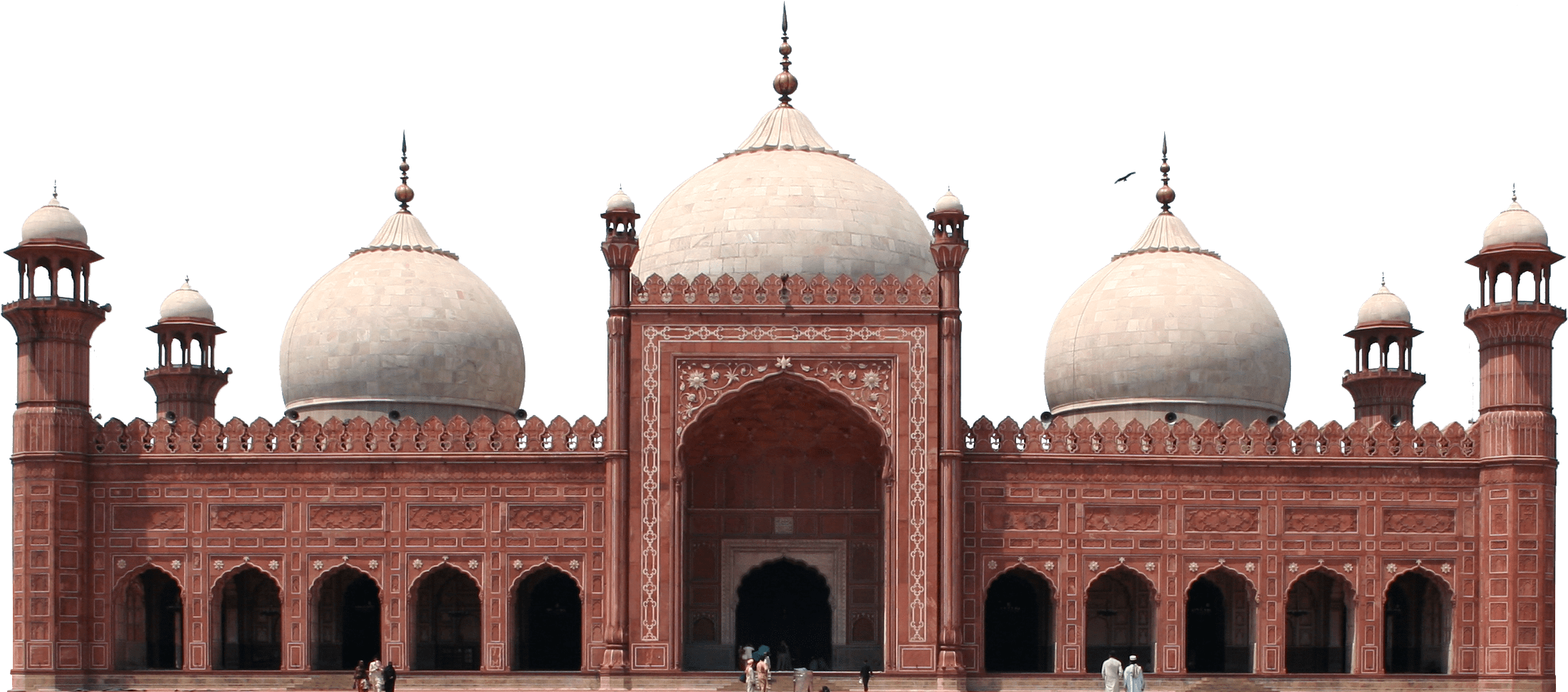

In the late 1600s, the Mughal empire was at its height, spreading out from India into what is now Pakistan and Afghanistan. The Emperor Aurangzeb had grown the empire through unceasing warfare and conquest. Aurangzeb was different from the rulers who had come before him. For five generations, the Mughal emperors had been known for their religious tolerance, passionate support of the arts, and lavish, if slightly debauched lifestyle. Aurangzeb was an ascetic, banning alcohol, gambling, narcotics and dance from the empire. He instituted Islamic law and strongly favored Muslim citizens, levying extra taxes on non-muslims, and destroying Hindu Temples to be replaced with mosques.
In 1671 Aurangzeb commissioned the Badshahi Mosque in a tellingly militarized gesture. The Badshahi Mosque was constructed in two years in the city of Lahore, one of the Mughal capital cities, that protected the empire from invasion from the west. The mosque was not only a place of worship, it was a commemoration of the military campaign that conquered the Maratha king Shivaji Bhonsle. The Badshahi Mosque was designed to mirror the character of its founder. A bold red sandstone facade, and dense embellishment in classical Mughal floral patterns. At the time of its completion, it was the largest mosque in the world.
But warlike origins led to a warlike legacy. In 1799, the Sikh army of Ranjit Singh captured Lahore, and the Badshahi Mosque was used as a stable for the army’s horses. Forty years later, during the First Anglo-Sikh War, tunnels under the mosque were used to store gunpowder, and in 1849 when the British seized Lahore, the mosque’s outer walls were dismantled and the site used as a garrison for the next three years. Only in 1939, after Pakistan won its independence from the British Indian Empire, were repairs commissioned, and the Badshahi Mosque’s legacy of invasion and violence could begin to heal.
...
Got questions, comments or corrections about Badshahi Mosque بادشاہی مسجد? Join the conversation in our Discord, and if you enjoy content like this, consider becoming a member for exclusive essays, downloadables, and discounts in the Obelisk Store.
